Microsoft Azure Data Lake
Overview
Data analytics is a key to success in today's data-driven world. Multiple organizations generate vast amounts of data and to extract valuable insights from this data, efficient storage and processing solutions are essential. Microsoft Azure Data Lake provides a platform that enables to storage and processing of big data. In this article, we will explore the key aspects of Azure Data Lake Storage.
What is Data Lake?
- A Data Lake is a centralized storage repository that can be used to store and manage large volumes of structured, semi-structured, and unstructured data.
- Data Lakes do not require predefined schemas before storing the data and support diverse data types.
- This flexibility enables organizations to capture and store data from various sources.
- Data Lakes can accommodate massive amounts of data, making them suitable for big data analytics and processing.
- Data Lakes also support parallel processing, allowing for efficient data retrieval and analysis.
- Data Lakes provide robust security measures, including encryption at rest and in transit and role-based access control (RBAC).
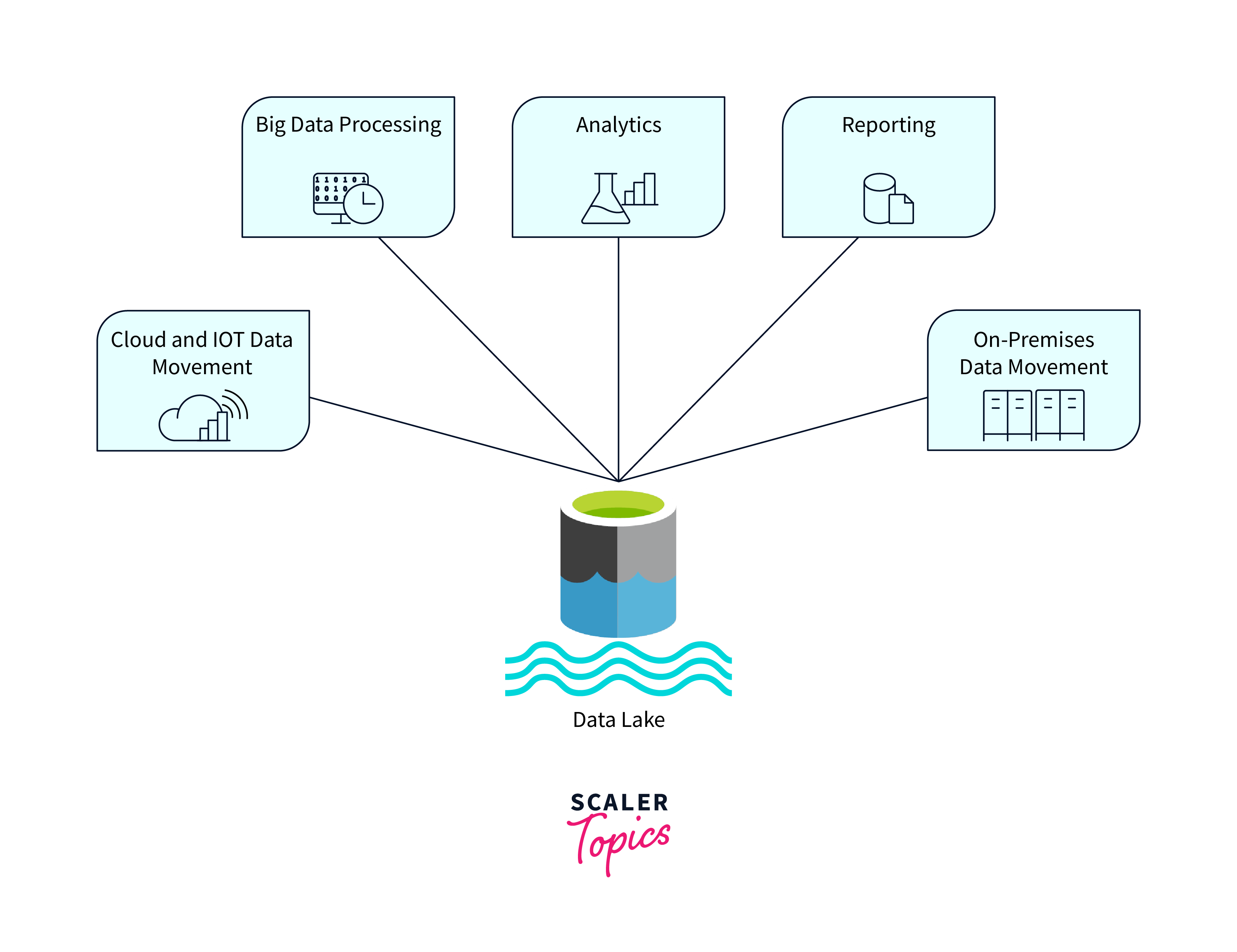
What is Azure Data Lake Storage?
Azure Data Lake Storage (ADLS) is a cloud-based storage service provided by Microsoft Azure that is designed specifically for big data analytics workloads. It offers limitless storage capacity and high-performance capabilities, allowing organizations to store and manage vast amounts of structured and unstructured data.
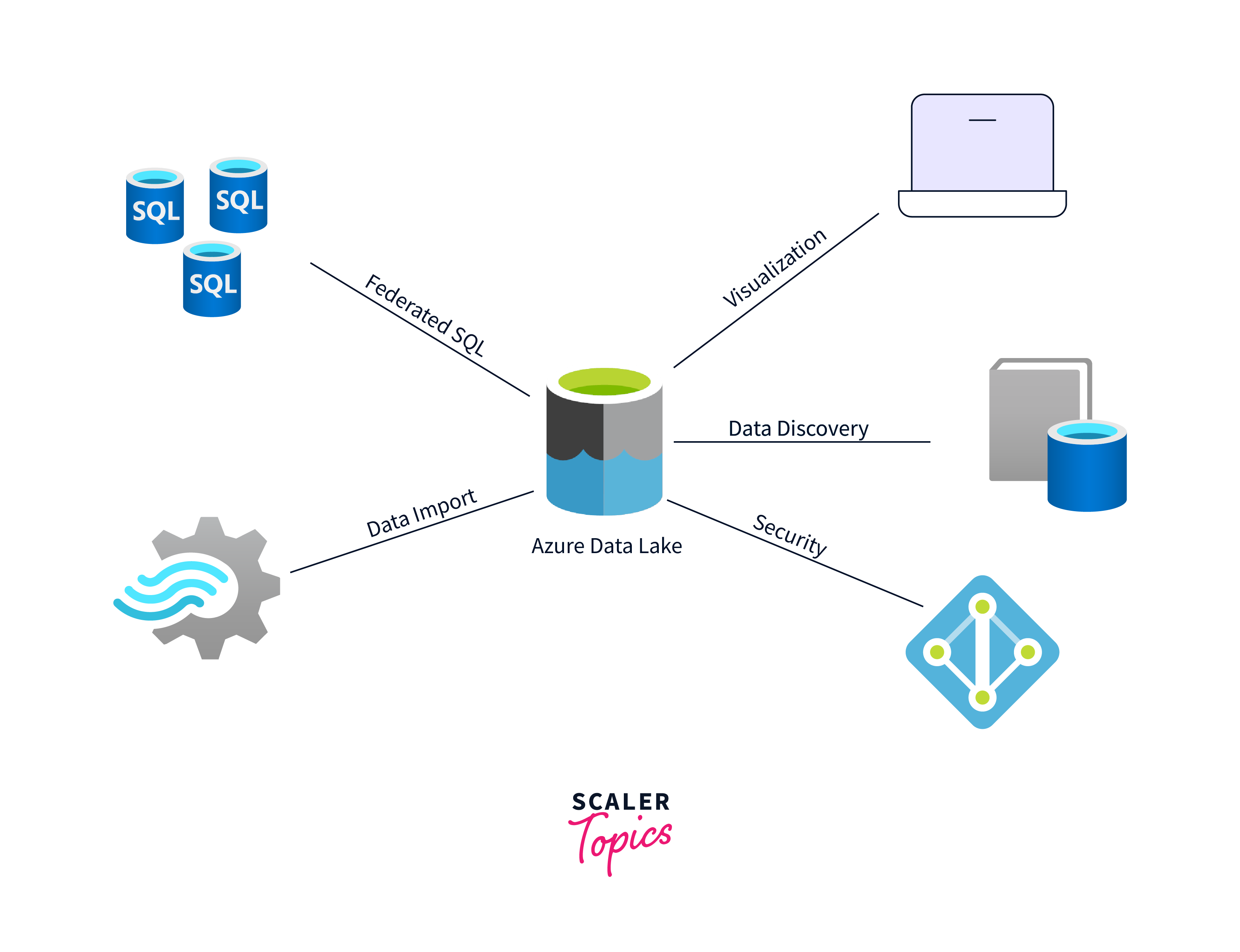
Benefits of Azure Data Lake
- Azure Data Lake offers limitless storage capacity.
- It supports structured, semi-structured, and unstructured data types.
- Azure Data Lake follows a pay-as-you-go pricing model, allowing organizations to optimize costs.
- Azure Data Lake integrates seamlessly with popular big data processing frameworks like Apache Spark and Apache Hadoop, enabling efficient data analytics and processing at scale.
- The distributed file system architecture of Azure Data Lake enables parallel processing, ensuring faster data retrieval and analysis, especially with large datasets.
- Azure Data Lake Storage integrates with other Azure services, such as Azure Databricks and HDInsight for data analysis.
- Azure Data Lake offers robust security features, including encryption at rest and Azure Active Directory integration.
Working on Azure Data Lake
Azure Data Lake follows a distributed file system architecture, that allows for high-performance data storage and processing. The key components and processes involved in the working of Azure Data Lake are,
Data Ingestion:
- Data can be ingested into Azure Data Lake from various sources, including IoT devices, log files, databases, social media platforms, and more.
- Data can be uploaded directly to ADLS or streamed in real-time using Azure Event Hubs or Azure IoT Hub.
Data Partitioning:
- To enable parallel processing and efficient retrieval, data in Azure Data Lake is divided into smaller chunks called partitions.
- These partitions are spread across multiple storage nodes within the Azure infrastructure, allowing for distributed storage and processing.
Data Processing:
- Azure Data Lake seamlessly integrates with popular big data processing frameworks like Apache Spark and Apache Hadoop.
- These frameworks can read data from ADLS in parallel, perform complex data analytics, and machine learning tasks, and write the processed results back to ADLS.
Data Analytics and Visualization:
- Processed data stored in Azure Data Lake can be analyzed and visualized using a wide range of tools and platforms.
- Azure Data Lake can seamlessly integrate with various analytics services, such as Power BI and Azure Synapse Analytics for valuable insights from data.
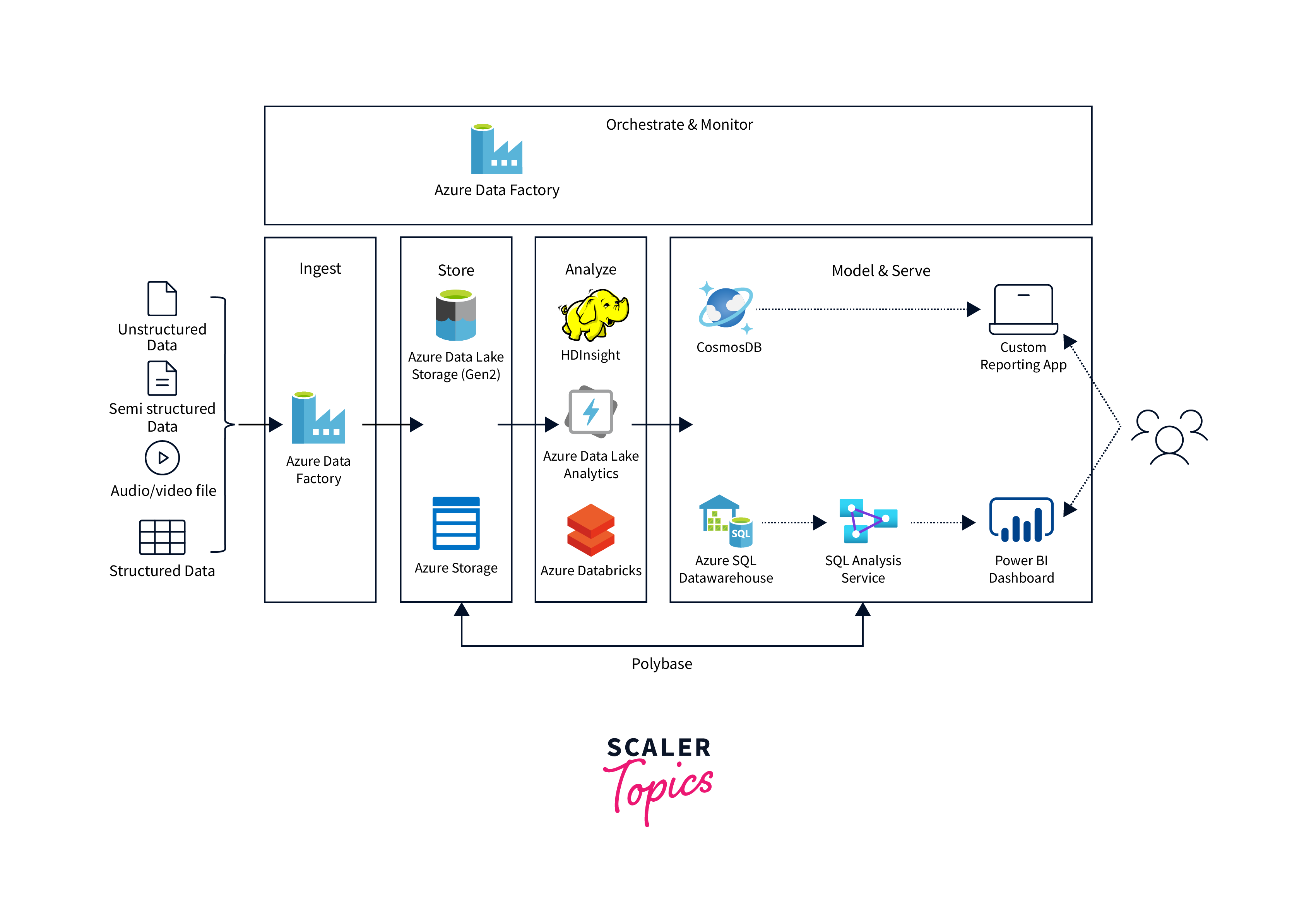
ADLS and Big Data Processing
- Azure Data Lake Storage seamlessly integrates with popular big data processing frameworks like Apache Spark and Apache Hadoop.
- This integration enables businesses to perform complex analytics, machine learning, and data processing tasks on massive datasets stored in ADLS.
- The distributed nature of ADLS ensures that these processing frameworks can operate in parallel, significantly reducing processing time.
Azure Data Lake Storage Gen2
Azure Data Lake Storage Gen2 is an enhanced version of Azure Data Lake Storage that combines the capabilities of a data lake with the robustness of a hierarchical file system. It offers improved performance, scalability, and management features, making it a powerful storage solution for big data workloads.
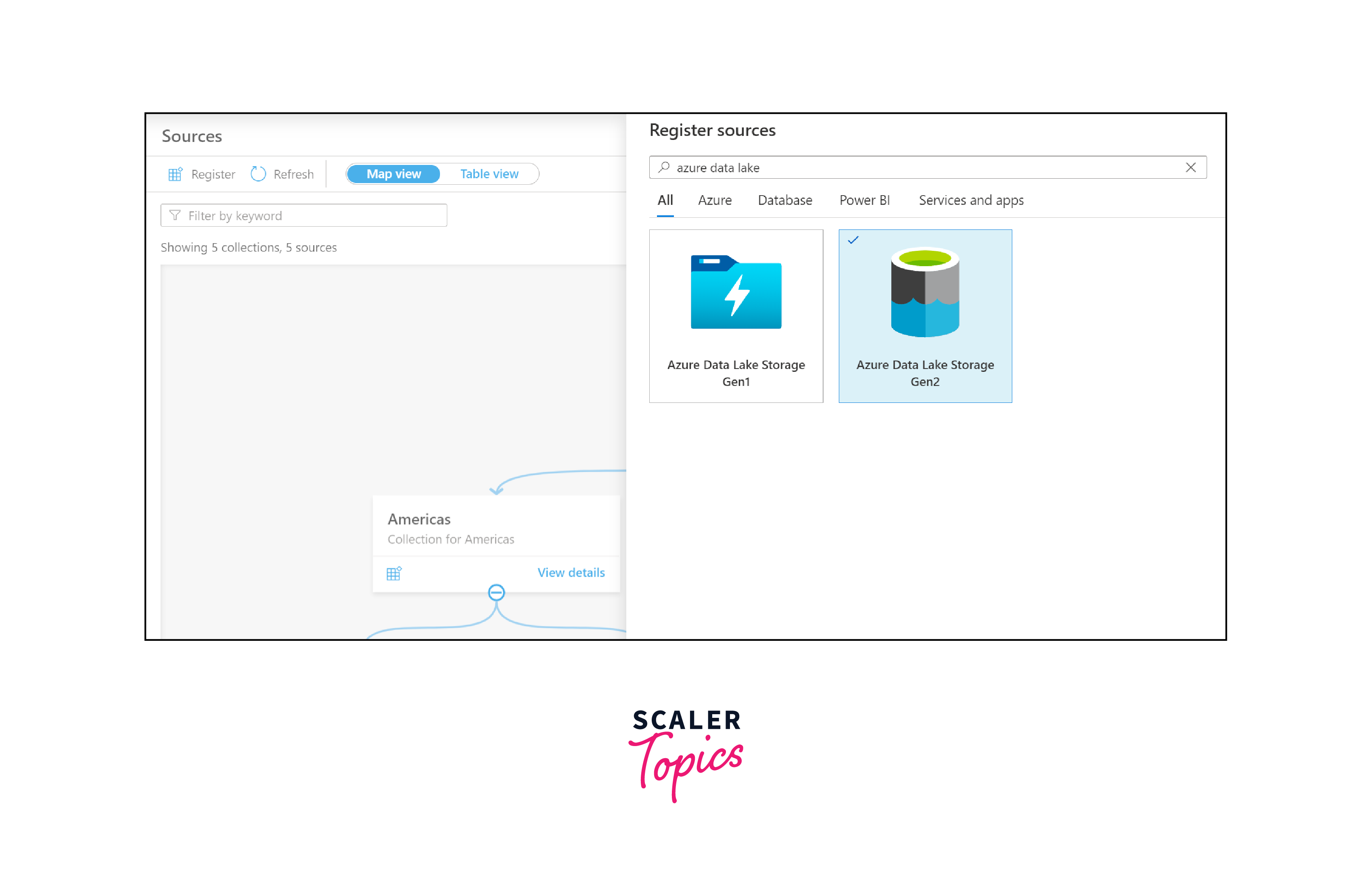
Here is a tabulation highlighting the differences between Azure Data Lake Storage Gen1 and Gen2:
| Azure Data Lake Storage Gen1 | Azure Data Lake Storage Gen2 |
|---|---|
| Uses a distributed file system without a hierarchical namespace | Introduces a hierarchical file system for enhanced file management capabilities |
| Limited support for folder and file organization | Supports folders and subfolders for organizing data more efficiently |
| Metadata operations are slower and less efficient | Faster metadata operations for improved data management |
| Supports only POSIX-based ACLs for access control | Offers both POSIX-based ACLs and Azure AD-based ACLs |
| Limited compatibility with Blob storage APIs | Provides full compatibility with Blob storage APIs |
| Limited compatibility with Azure Data Lake Analytics | Fully compatible with Azure Data Lake Analytics |
| Doesn't support transactional operations | Supports transactional operations for atomicity and consistency in file updates |
| Limited storage account capacity (5 PB) | Enhanced storage account capacity (up to 500 PB) |
| Doesn't support Azure Blob storage features like tiering | Supports Azure Blob storage features like lifecycle management and tiering |
POSIX-based ACLs (Access Control Lists) are a set of permissions associated with files and directories in a file system. They provide access control by specifying permissions for individual users and groups beyond the traditional owner-group-other permissions.
Azure Data Lake Store Security
Azure Data Lake Store provides several security features to ensure the protection and privacy of data. The various security measures offered by Azure Data Lake Store are:
- Azure Data Lake Store supports encryption at rest, which ensures that data stored in the storage account is encrypted to prevent unauthorized access. It also provides encryption in transit, securing data as it is transferred between clients and the storage service.
- Azure Data Lake Store integrates with Azure Role-Based Access Control(RBAC), allowing administrators to define fine-grained access control policies.
- Azure Data Lake Store seamlessly integrates with Azure Active Directory (Azure AD), enabling organizations to manage user identities and access permissions centrally. Azure AD integration allows for unified access control and authentication, making it easier to enforce security policies and manage user access to the Data Lake Store.
- Azure Data Lake Store supports virtual network service endpoints, which allow organizations to secure access to the Data Lake Store by restricting access only to approved virtual networks.
- Azure Data Lake Store provides auditing and monitoring capabilities to track and log activities within the Data Lake Store. It allows administrators to identify potential security threats, suspicious activities, or compliance violations.
- Azure Data Lake Store offers advanced threat protection features, such as Azure Advanced Threat Protection (ATP), which helps detect and mitigate potential security threats.
Azure Data Lake Store Pricing
Azure Data Lake Store pricing is based on storage consumption and data retrieval. The cost varies depending on the region, the amount of data stored, and the data transfer volume. Before exploring the price, you need to understand the different tires in ADLS. The tiers are,
- Premium tier:
Provides the highest level of performance with the fastest data retrieval and is optimized for workloads that require low-latency access to data. - Hot tier:
Designed for frequently accessed data. It offers a balance between performance and cost. - Cool tier:
Optimized for data that is accessed less frequently but still requires low-cost storage. It offers a lower storage cost compared to the Hot tier. - Cold Tier (preview):
Designed for long-term archival of data with minimal access requirements. It offers the lowest storage cost among the tiers but with higher retrieval latency. - Archive Tier:
It is highly specialized for a long time storing and has the least storage cost, but a higher retrieval cost.
Here is a pricing table for Azure Data Lake Storage Gen2,
| Storage Tier | First 50 TB / month (INR per GB) | Next 450 TB / month (INR per GB) | Over 500 TB / month (INR per GB) |
|---|---|---|---|
| Premium | ₹12.30844 | ₹12.30844 | ₹12.30844 |
| Hot | ₹1.50984 | ₹1.45240 | ₹1.38676 |
| Cool | ₹0.82057 | ₹0.82057 | ₹0.82057 |
| Cold (preview) | ₹0.29541 | ₹0.29541 | ₹0.29541 |
| Archive | ₹0.08124 | ₹0.08124 | ₹0.08124 |
How do I Get Started?
To get started with Azure Data Lake Storage Account, follow these steps:
- Create an Azure account if you don't already have one.
- In the Azure portal, click the Storage Account if visible or click on the search bar button located at the top of the page type Storage Accounts, and select the Storage Accounts option from the search results.
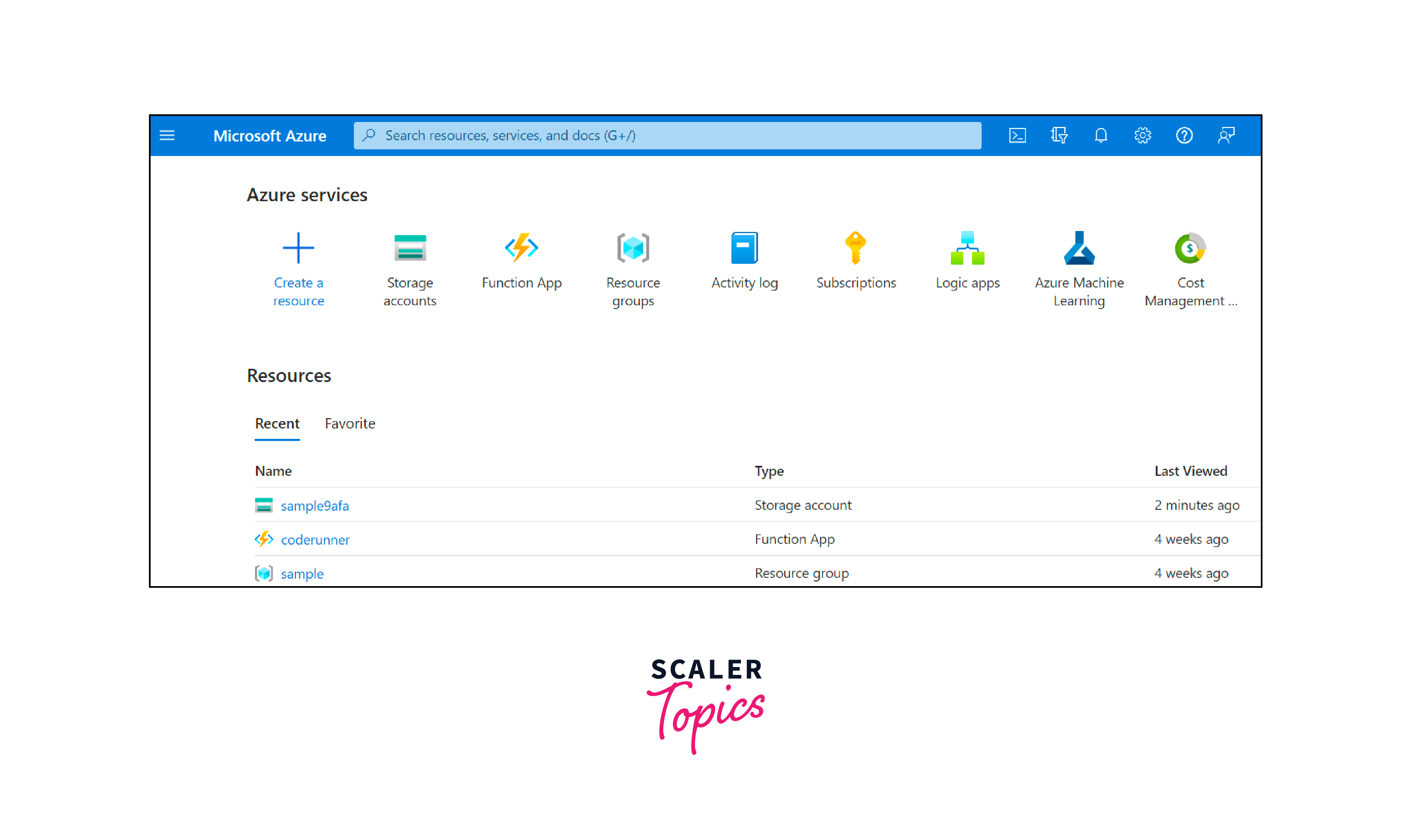
- On the Storage Account, click on the Create button to begin the creation process.
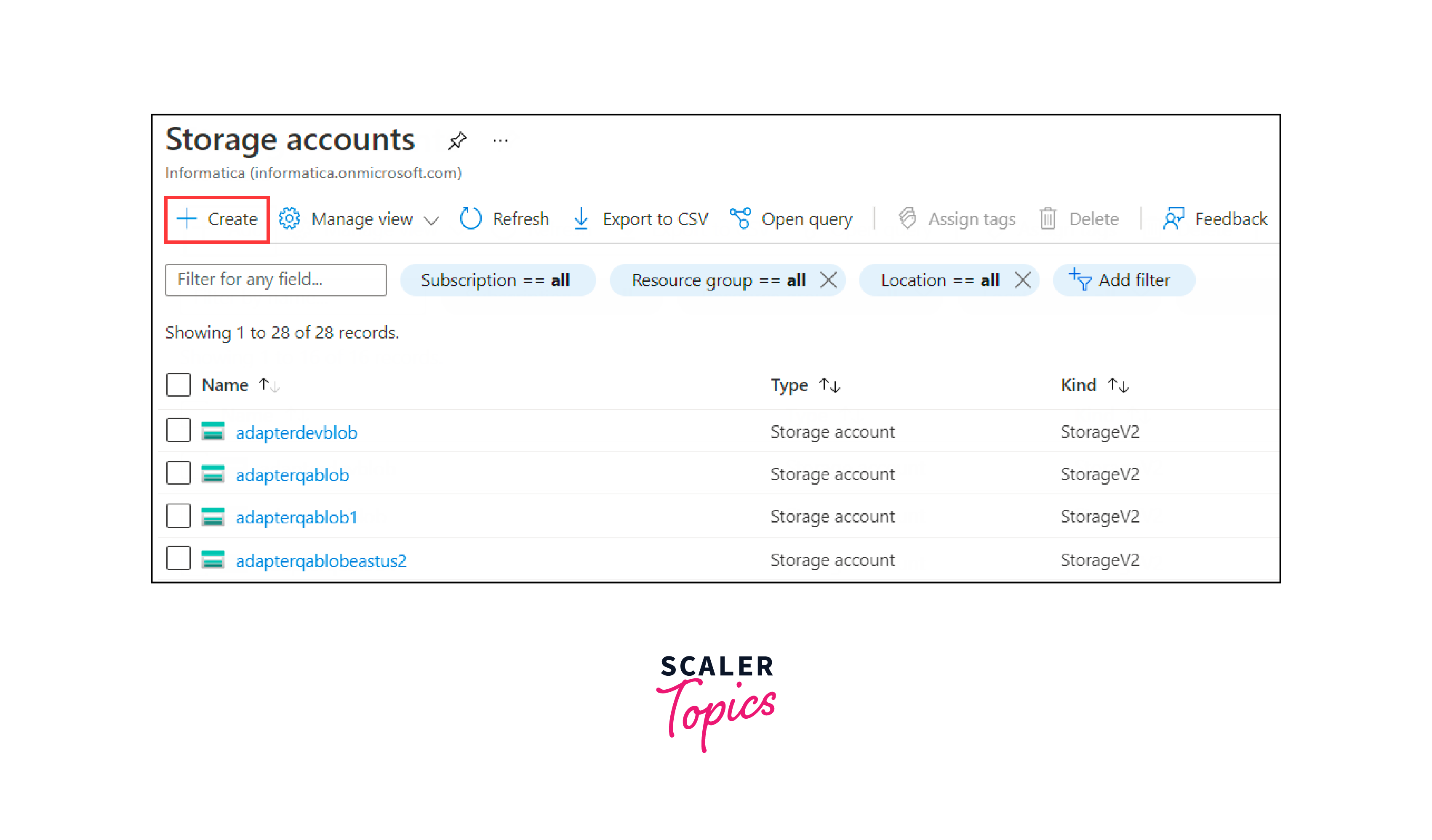
- In the Create Storage Account page, provide the required information, such as the account name, subscription, resource group, and location.
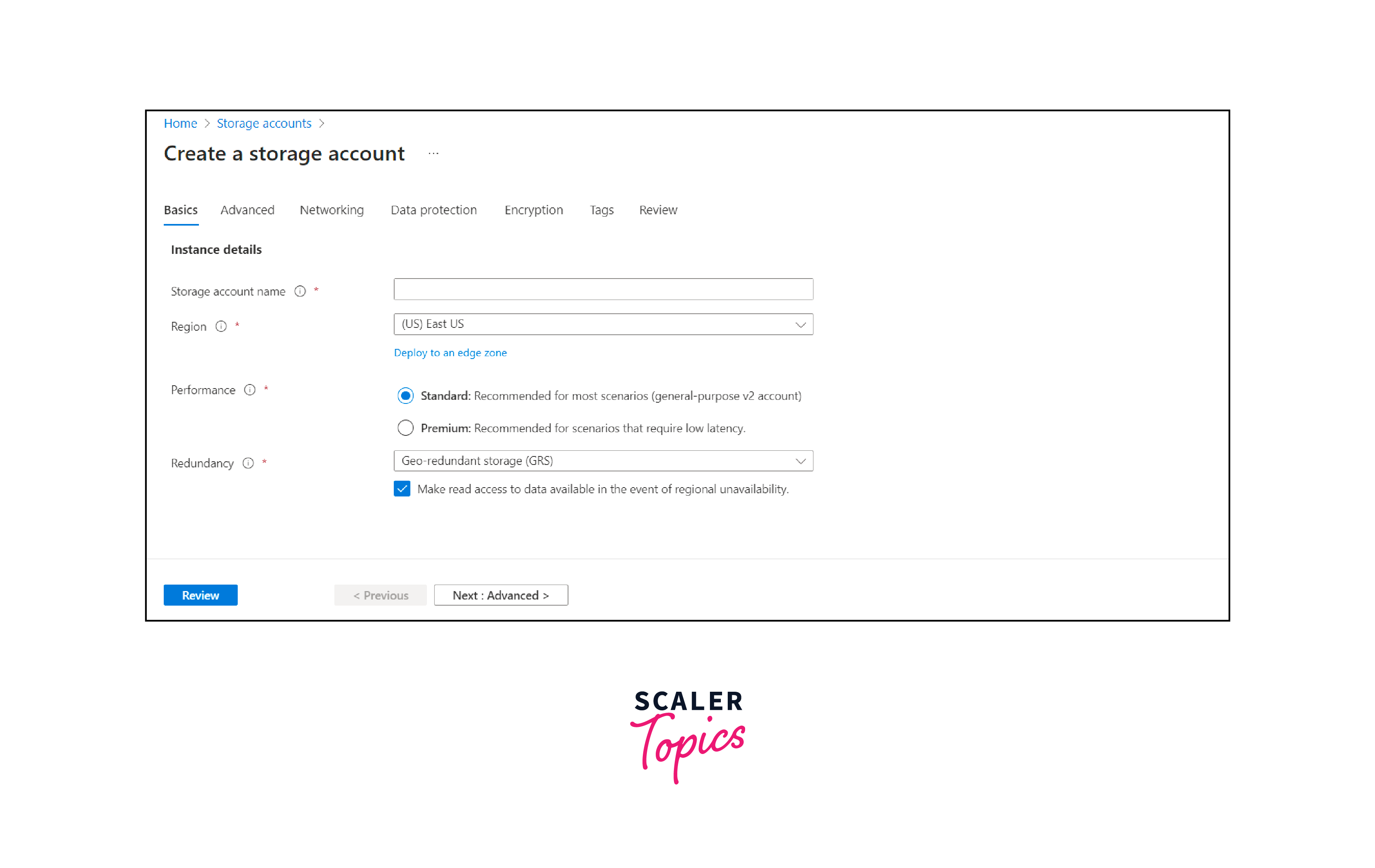
- Under the Advanced tab, enable the hierarchical namespace and security transfer options to use Azure Data Lake Storage Gen2 or proceed with the present configurations.
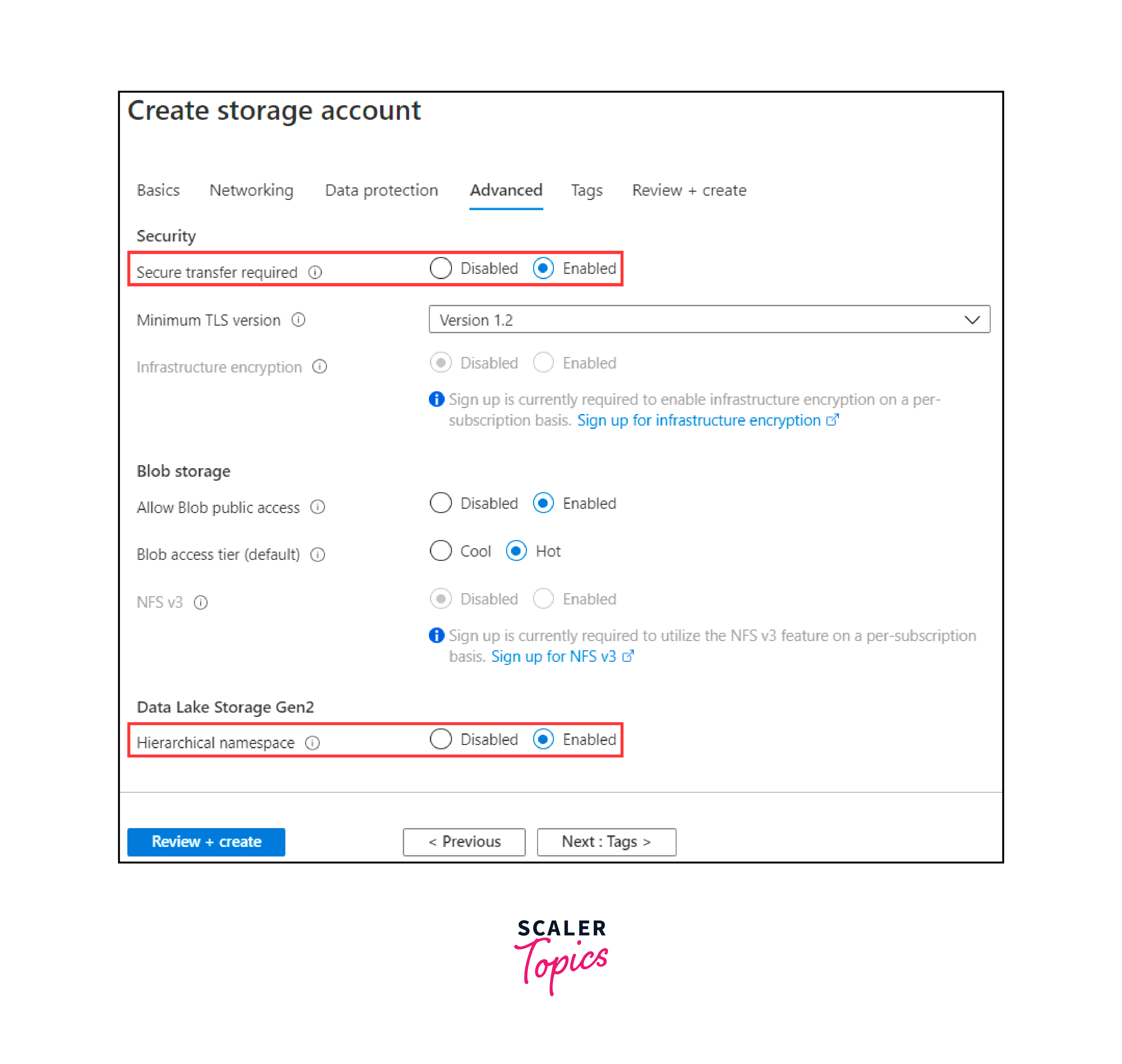
- You can configure advanced network properties like private network points in the Network tab and also include data delete and recovery options, versioning, and other data-related options from the Data protection tab.
- After providing all the necessary information, click on the Review section to validate the settings and click the Create button to create the Azure Data Lake Storage account.
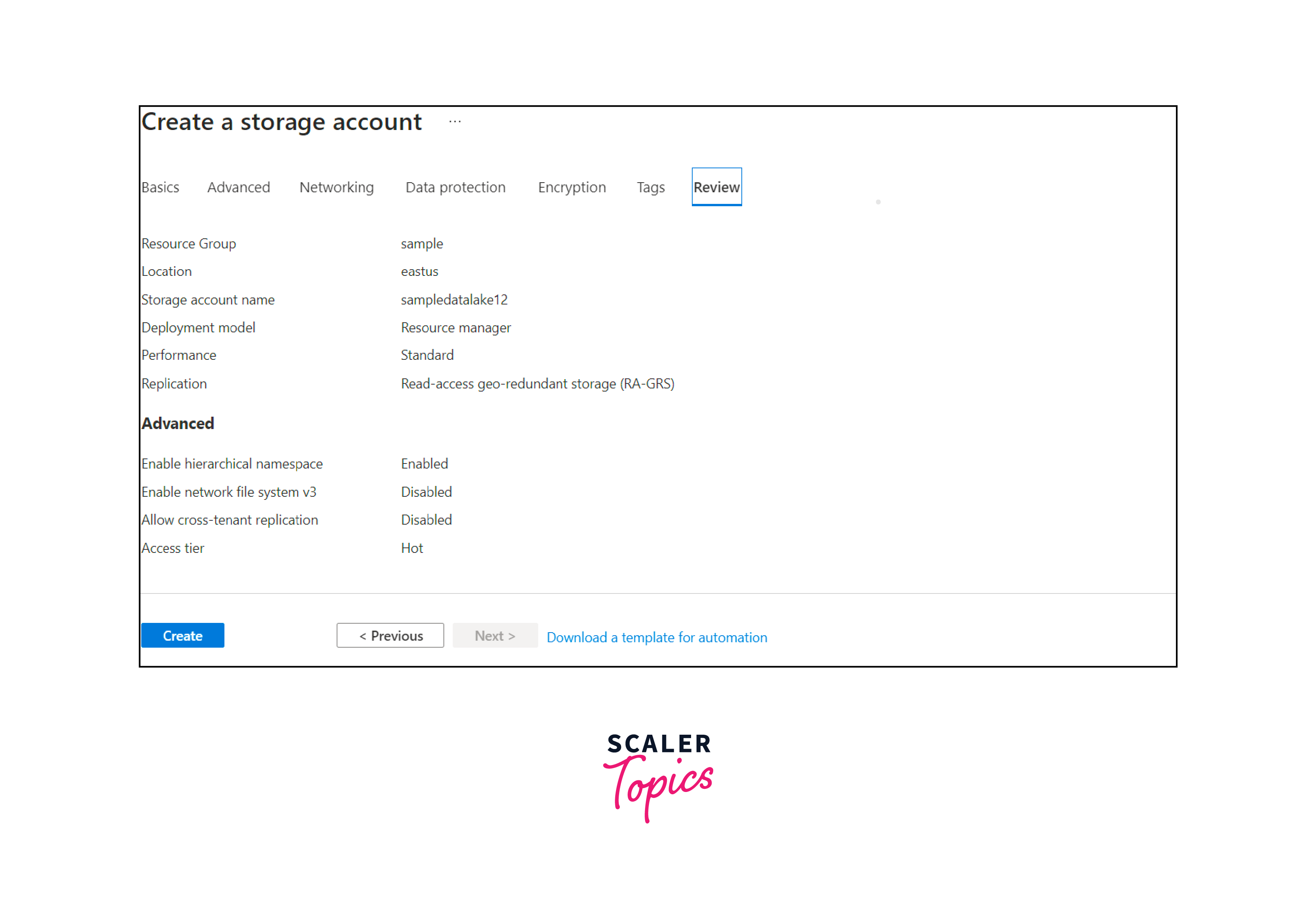
Components of Azure Data Lake
Azure Data Lake consists of three main components:
- Azure Data Lake Storage:
The primary storage layer that stores and manages data. - Azure Data Lake Analytics:
A powerful analytics service that allows you to perform complex data queries and transformations using familiar SQL-like syntax. - Azure Data Lake Store:
A user-friendly portal that provides a graphical interface for managing and accessing data stored in Azure Data Lake Storage.
Need of Azure Data Lake
The need for Azure Data Lake arises from the challenges posed by the increasing volume, velocity, and variety of data generated by modern organizations. Some of the needs of Azure Data Lake are,
- Limitless storage capacity, with the scalability required to accommodate growing data sets.
- Support for different data types.
- Advanced analytics based on big data processing, machine learning, and data mining.
- Allows organizations to process and analyze streaming data in real-time.
- Preserves the raw format of data and allows data scientists and analysts to explore data sets, and gain a deeper understanding of the underlying information.
- Optimized costs by only paying for the storage and processing resources they use.
About Azure Data Lake Store
Azure Data Lake Store, as a critical component of Azure Data Lake, offers limitless storage capacity and high-performance capabilities. It offers a scalable and cost-effective solution for big data storage and processing.
Azure Data Lake Store File System
Azure Data Lake Store employs a hierarchical file system that organizes data in a logical folder and file structure, similar to a traditional file system. It allows users to create folders and subfolders to organize their data efficiently. The hierarchical structure simplifies data organization and makes it easier to manage large data sets. Users can upload files directly to specific folders within the Data Lake Store, ensuring data is well-organized and easily accessible.
Azure Data Lake Store Security
Ensuring the security and privacy of data is a top priority for Azure Data Lake Store. It offers robust security measures, which are similar to the security of Azure data lake storage discussed in the previous section. The security features ensure that data remains secure and protected from unauthorized access.
Conclusion
- Azure Data Lake is a cloud-based storage and analytics service provided by Microsoft Azure.
- It allows organizations to store and process large volumes of structured, semi-structured, and unstructured data.
- The hierarchical file system in Azure Data Lake enables efficient organization and management of data.
- Security features include encryption at rest and in transit, RBAC, Azure AD integration, and virtual network service endpoints.
- Benefits of Azure Data Lake include scalability, flexibility, fast data processing, and real-time analytics.
- Different storage tiers are present for different data access patterns and cost considerations.
- Azure Data Lake Store is designed to meet the requirements of big data storage, analysis, and collaboration.
